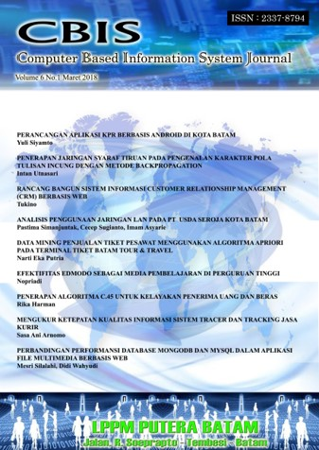SISTEM PENDUKUNG KEPUTUSAN PEMILIHAN SISWA TERBAIK DENGAN METODE PIPRECIA-MARCOS (STUDI KASUS: SMK TI GLOBAL SINGARAJA)
DOI:
https://doi.org/10.33884/cbis.v13i2.10683Keywords:
SPPK, MCDM, MARCOS, PIPRECIA, Pemilihan Siswa, SDLC, SUSAbstract
The selection process for outstanding students at SMK TI Bali Global Singaraja faces objectivity challenges, particularly when assessing candidates with seemingly equal qualifications. This study aims to mitigate subjectivity and enhance transparency by designing and implementing a web-based Decision Support System (DSS). The system was developed using the Software Development Life Cycle (SDLC) framework and integrates a hybrid Multi-Criteria Decision-Making (MCDM) model. The Pivot Pair-wise Relative Criteria Importance Assessment (PIPRECIA) method was applied to determine the weights of seven evaluation criteria, while the Measurement of Alternatives and Ranking according to Compromise Solution (MARCOS) method was used to rank student candidates. The results show that the DSS was successfully implemented, as validated by black-box testing with a 100% success rate. Furthermore, a usability evaluation using the System Usability Scale (SUS) yielded an average score of 75, indicating good user acceptance. This research concludes that the integrated PIPRECIA-MARCOS model provides a structured and accountable framework for decision-making. The novelty of this study lies in the application of this specific hybrid method to the student selection process, offering a robust solution that minimizes bias and increases the integrity of the evaluation

Downloads
Published
How to Cite
Issue
Section
License
Copyright (c) 2025 Computer Based Information System Journal

This work is licensed under a Creative Commons Attribution-NonCommercial-ShareAlike 4.0 International License.













